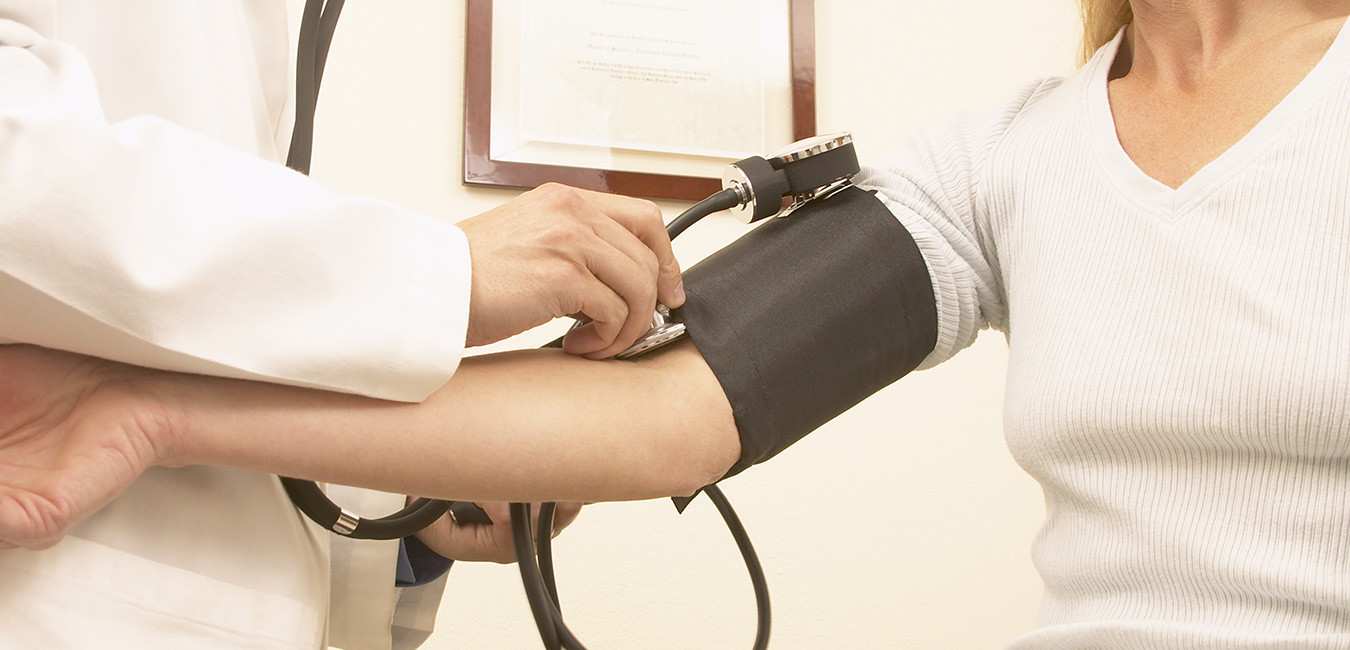About 70 million Americans–one in three adults–have high blood pressure, but only about half of them have it under control. That’s alarming since a new study by the CDC reports that U.S. deaths related to hypertension (HTN) have soared by 61.8 percent, from 245,220 in 2000 to 396,675 in 2013.
The researchers examined files from the National Vital Statistics System and defined hypertension-related deaths as those with any mention of HTN on the death certificate. In 2000, 65 percent of all deaths from heart disease, stroke, cancer and diabetes also listed hypertension, compared to 54 percent in 2013. In fact, one out of six hypertension-related deaths, listed HTN as the underlying cause of death, while in the rest, HTN was cited as a contributing factor. These frightening findings highlight the urgency of improved diagnosis and management of high blood pressure, defined as blood pressure readings of 140/90 mmHg or higher. Since high blood pressure often has no symptoms, education about the importance of screening is essential.
While some factors that raise risk for high blood pressure (e.g., smoking, obesity, a sedentary lifestyle, and family history) are well known, new and recent studies have also identified some surprising culprits:
Sleep Apnea
Up to 10 million Americans have “resistant hypertension (RH),” blood pressure that remains uncontrolled despite taking a diuretic and at least two other blood pressure medications. A major, hidden factor may be untreated obstructive sleep apnea (OSA), suggests a new meta-analysis published in Journal of Hypertension. OSA–bouts of interrupted breathing during sleep–is marked by such symptoms as loud snoring, abrupt nighttime awakening, dry mouth in the morning, and daytime drowsiness.
When patients with RH and OSA were treated with continuous positive airway pressure (CPAP), their systolic blood pressure fell by an average of 7.21 mmHg and diastolic pressure dropped by 4.99 mmHg. “Patients with resistant hypertension and the very highest blood pressure experienced the greatest reduction in blood pressure after using CPAP therapy,” said Ulysses Magalang, MD, lead study author and director of the Sleep Disorders Center at The Ohio State University Wexner Medical Center. “This response suggests that untreated sleep apnea may be why these people haven’t seen improvement in their blood pressure despite the concurrent use of three or four medications,” added Dr. Magalang.
Low Vitamin D Levels
A 2014 meta-analysis published in The Lancet Diabetes & Endocrinology suggests a “causal link” between vitamin D deficiency and high blood pressure, while higher levels of the sunshine vitamin may be protective. The meta-analysis of pooled data from studies involving 146,581 participants showed that each 10% increase in vitamin D concentration was associated with lower systolic and diastolic blood pressure readings and an 8.1 percent reduced odds of hypertension. Vitamin D levels can be measured with a simple blood test.
“In view of the costs and side effects associated with antihypertensive drugs, the potential to prevent or blood pressure and therefore the risk of hypertension with vitamin D is very attractive,” stated study leader Professor Elina Hyppönen from the University of South Australia. However, he added, “randomized controlled trials are also needed to confirm causality and the potential clinical benefits of vitamin D supplementation.”
Medical Visits
Patients with “white-coat hypertension (WCH)”–elevated blood pressure that only occurs at the doctor’s office–may be at risk for conditions linked to true hypertension, according to a meta-analysis published in Blood Pressure Monitoring this month. The researchers pooled data from 10 studies involving 3,478 untreated patients.
In patients with WCH, the lining of the carotid arteries of the neck was significantly thicker than in those with normal blood pressure. This measurement–called carotid intima-media thickness (cIMT)–is used clinically to assess heart attack and stroke risk.
The study found no significant differences in the cIMT measurements of patients with WCH and those with true hypertension, suggesting that even temporary surges in blood pressure may enough to trigger arterial damage. “This finding supports the concept that WCH is not an entirely benign condition,” say the study authors.
Thyroid Problems
A 2007 study published in Journal of Hypertension found significantly higher 24-hour ambulatory blood pressure levels in patients with hypothyroidism (underactive thyroid) than in a control group of healthy people matched by age and gender. Patients with hypothyroidism also had a higher body mass index (BMI) and higher triglyceride levels.
Hypothyroidism is more common in women and can cause such symptoms as unexplained weight gain or difficulty losing weight, depression, increased sensitivity to cold, dry skin, and changes in the menstrual cycle. Hypo- and hyperthyroidism can be diagnosed with the thyroid stimulating hormone (TSH) test, performed on a blood sample.

